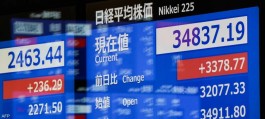The general market decline last month has affected the price of Cardano (ADA), which is now trading at $0.37 after seeing an 18% price drop over the past 30 days.
On-chain data revealed that this price drop has prompted some of its largest holders to reduce their trading activity.
Cardano whales seek to reduce exposure
Cardano (ADA) has seen a drop in large transaction volumes over the past month. For example, during that period, the daily number of ADA transactions between $1 million and $10 million decreased by 33%.
The daily number of larger transactions, valued at more than $10 million, has also decreased by 24% over the past 30 days.
When an asset experiences a decrease in large transaction volume, it means that there is a significant decrease in the number of large transactions occurring for that asset. This happens when investors are not interested in trading the asset, and this can be due to several reasons, the most important of which is a change in market sentiment from positive to negative.
In confirmation of this, ADA’s weighted sentiment rating indicates this. At the time of publication, the scale’s value is -0.58.
The weighted sentiment of an asset tracks positive and negative mentions of that asset on social media platforms. When its value is less than zero, there is a general negative sentiment among people discussing the asset.
Generally, negative sentiment is a precursor to a continued decline in the value of an asset. This occurs because investors may be reluctant to trade the asset, leading to lower demand and a subsequent price decline.
ADA Price Prediction: Holders May Suffer Bigger Losses
As assessed on the daily chart, some of the key technical indicators for ADA are depicting a declining demand for the coin among market participants. For example, its Relative Strength Index (RSI) has fallen below the neutral 50 line. It is now worth 34.12 and is in a downtrend at the time of publication.
This indicator measures the overbought and oversold market conditions of an asset. It ranges from 0 to 100, with values above 70 indicating that the asset is overbought and likely to decline, while values below 30 indicate that the asset is oversold and may experience a bounce.
At 34.12, ADA's RSI indicates that selling pressure is outweighing buying activity.
Moreover, the Directional Movement Index (DMI) shows that the increase in selling activity has put bears in control of the market since June 12. This indicator measures the strength of an asset's price.
At the time of publication, its positive indicator (blue) is below its negative indicator (red). When the indicator is adjusted in this way, it is a bearish sign confirming that selling pressure is high.
If ADA sell-off continues to increase, its price may drop to $0.35.
However, if the sentiment turns from negative to positive, the increase in buying pressure could cause its value to rise to $0.41.









































